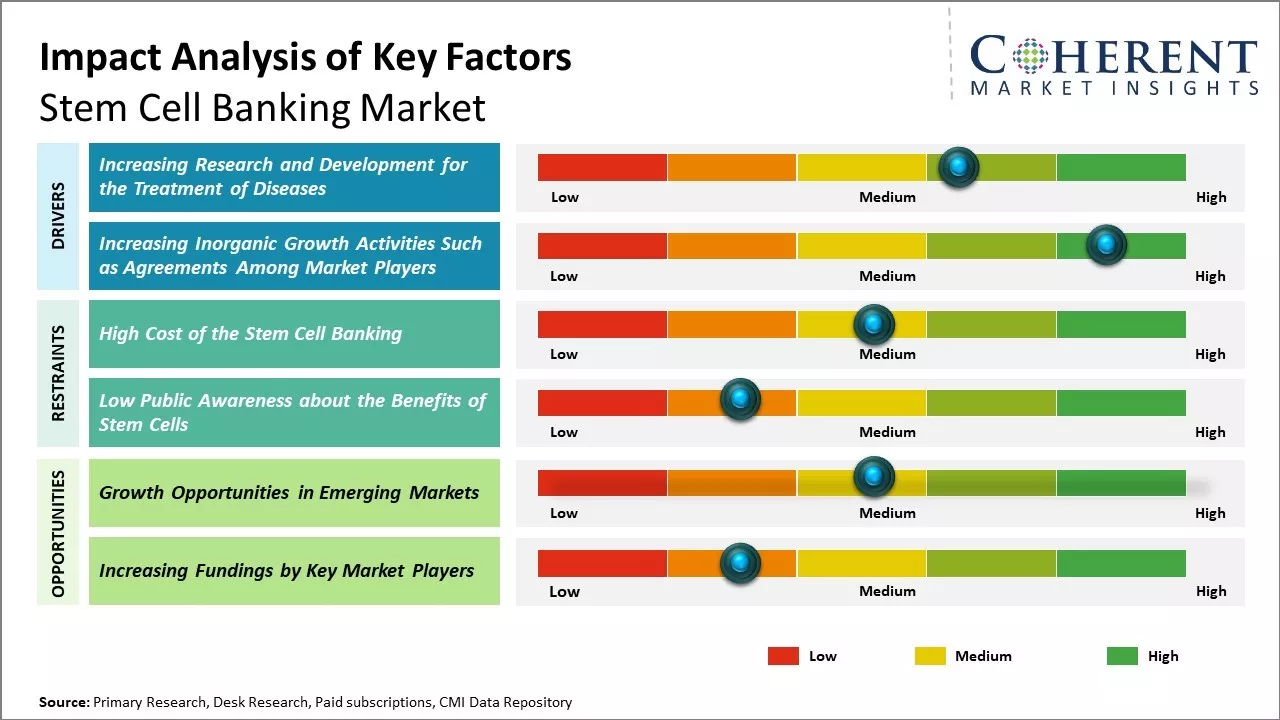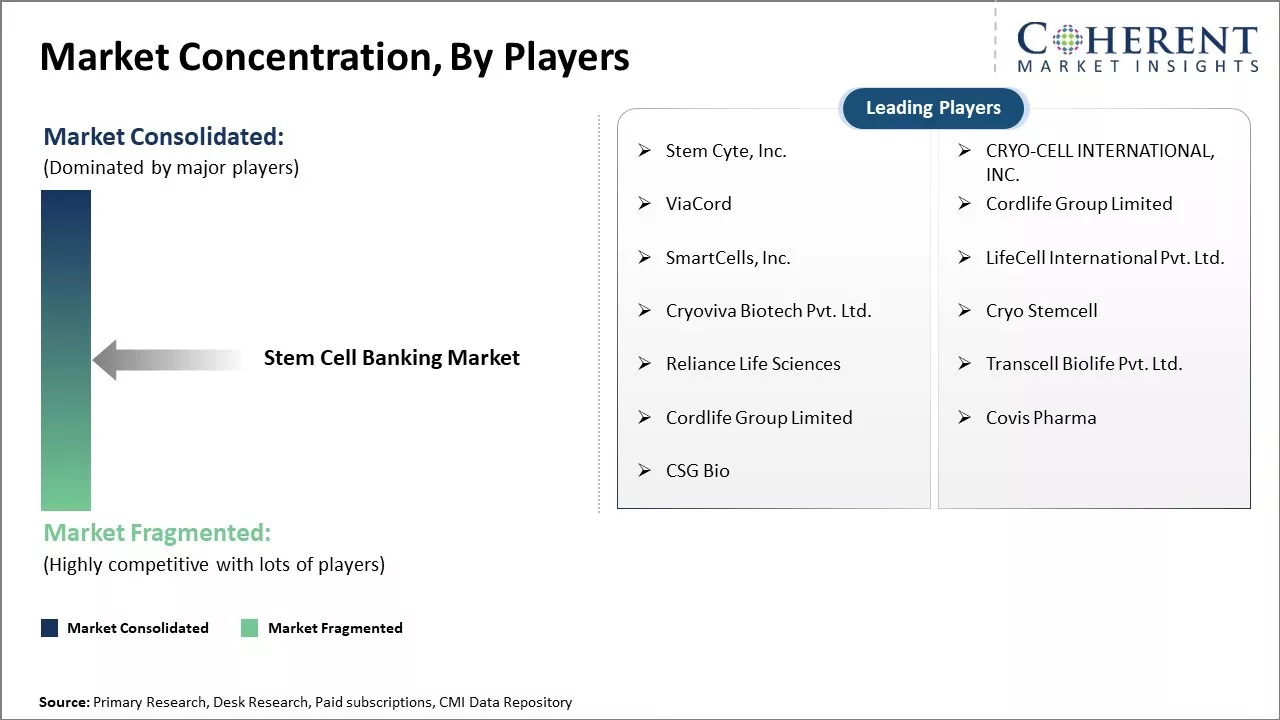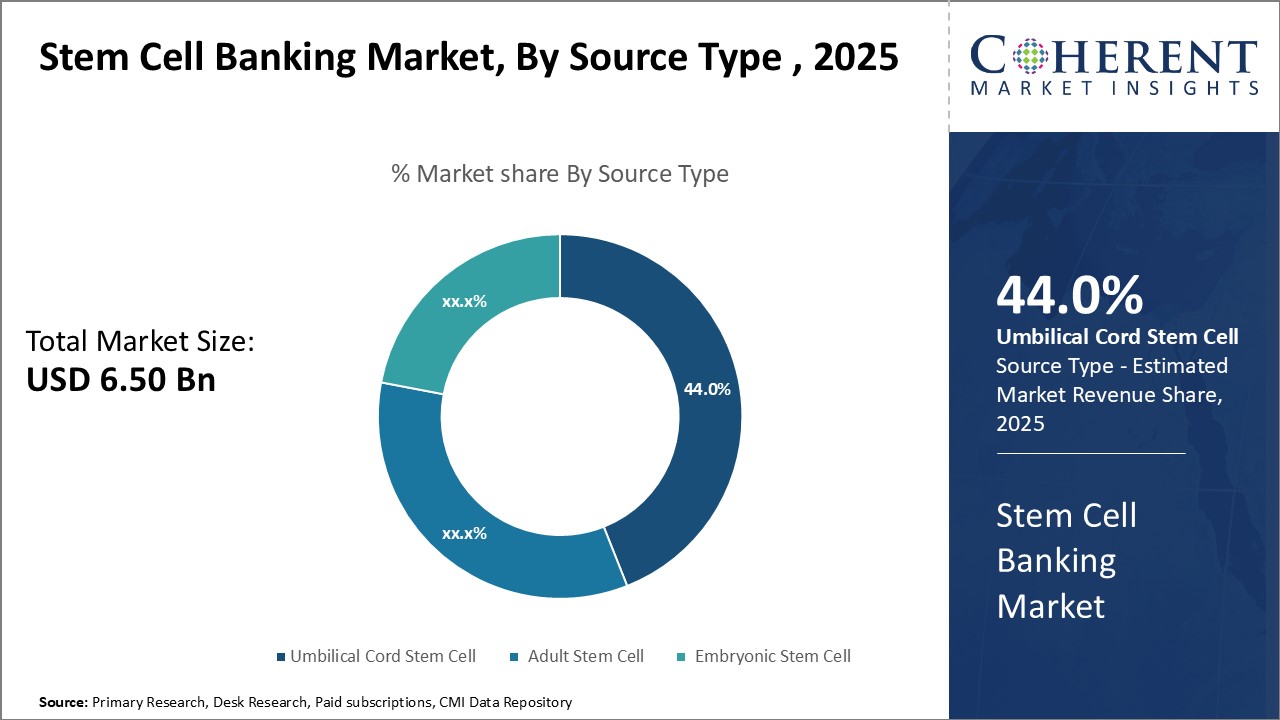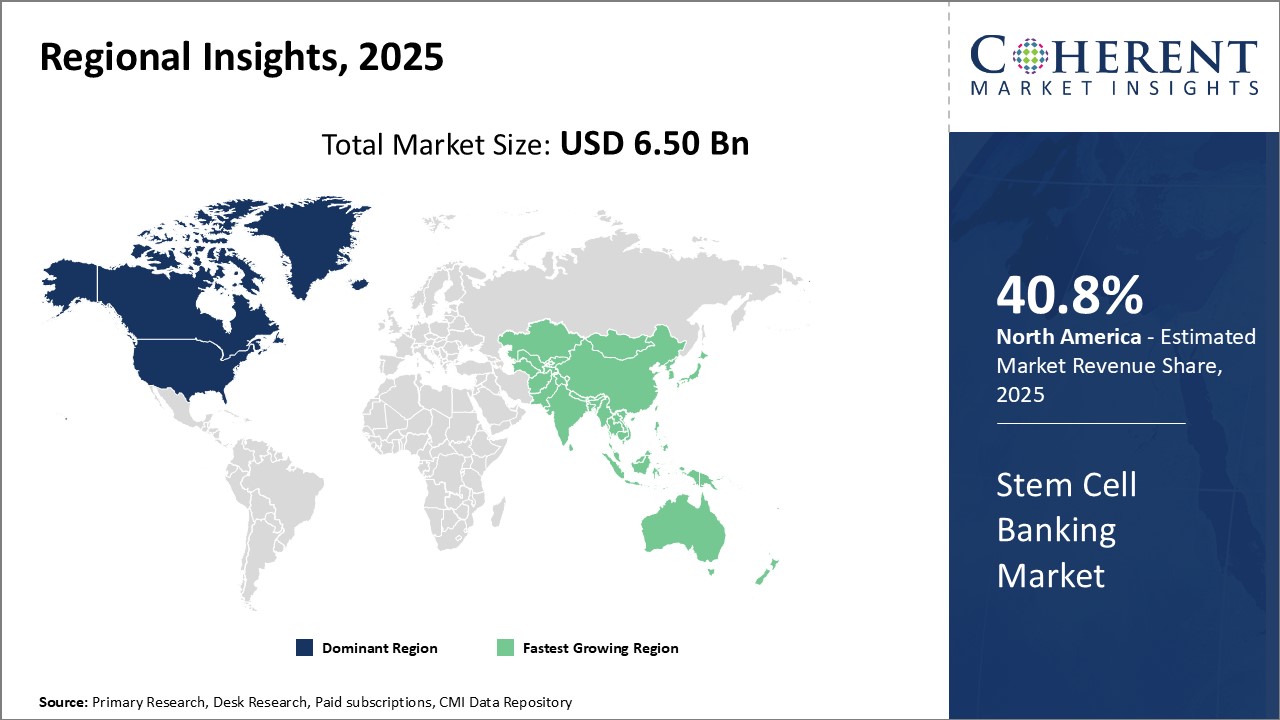Global stem cell banking market is estimated to be valued at USD 6.50 Bn in 2025 and is expected to reach USD 17.00 Bn by 2032, exhibiting a compound annual growth rate (CAGR) of 14.7% from 2025 to 2032.

Discover market dynamics shaping the industry: Request sample copy
Global stem cell banking market is witnessing growth due to growing awareness about the therapeutic potential of stem cells. Increasing investment by government and private companies in R&D activities for developing novel stem cell therapy and drugs also drives the market growth. Advancements in regenerative medicines using stem cells offer lucrative opportunities for market players. Moreover, rising focus on personalized medicine boosts demand for private and public cord blood banking services.
Increasing Research and Development for the Treatment of Diseases
Increasing research and development for the treatment of diseases is expected to propel the market growth. For instance, on May 9, 2022, Xintela, a company that develops medical products in stem cell therapy and targeted cancer therapy, announced the result of study conducted for the company’s stem cell product XSTEM, after injection into a joint with damaged cartilage, and develop into cartilage cells and directly contribute to producing new cartilage tissue. This demonstrates that XSTEM has excellent potential to be a DMOAD (Disease Modifying Osteoarthritis Drug), a treatment that can prevent further degradation of the cartilage in osteoarthritis patients.

Get actionable strategies to beat competition: Request sample copy
Increasing Inorganic Growth Activities Such as Agreements among Market PlayersIncreasing inorganic growth activities such as agreements among market players is expected to drive the market growth. For instance, in February 2021, Cryo-Cell International, Inc., a private cord blood bank that separates and stores stem cells, entered into a collaborative license agreement with Duke University, North Carolina, U.S. The agreement grants Cryo-Cell the rights to proprietary processes and regulatory data related to cord blood and cord tissue developed at Duke University. Cryo-Cell plans to explore, test, and administer and these therapies are offered to people with diseases such cerebral palsy, autism, multiple sclerosis, and COVID-19 for which there are not many U.S. FDA-approved medicines. These treatments utilize the unique immunomodulatory and potential regenerative properties derived from cord blood and cord tissue.

To learn more about this report, Request sample copy
Market Challenge – High Cost of the Stem Cell BankingThe high cost of stem cell banking is expected to hamper the growth of the global stem cell banking market over the forecast period. Stem cell preservation services are expensive and everyone cannot afford them. For instance, Americord Registry LLC, a private cord blood bank, announced that it typically charges between US$ 3,299 and US$ 6,599 for cord blood to be collected and stored for a period of 20 Years.
Market Opportunity – Growing Technological Advancements in Stem Cell Research
Advancements in stem cell research technologies are opening exciting new possibilities and promise hope for new therapies that could treat many incurable diseases. With recent breakthroughs, researchers are now able to direct stem cells to become specific cell types much more efficiently. This targeted differentiation ability allows scientists to create functional cell types like heart, nerve and pancreatic cells that could potentially replace those lost to injury or disease. Robust characterization techniques also allow detailed analysis of stem cell properties, improving quality control and helping maximize their therapeutic potential.

Discover high revenue pocket segments and roadmap to it: Request sample copy
Insights, By Source Type: Growing adoption of umbilical cord stem cell banking driving segment growthSource Type segment is sub-segmented into umbilical cord stem cell, adult stem cell, embryonic stem cell. Umbilical cord stem cell segment is estimated to hold 44.0% of the market share in 2025, owing to rising adoption rates among expectant parents. Umbilical cord stem cells show high potential for treatments across a wide range of diseases. Compared to embryonic stem cells which face ethical issues, umbilical cord stem cells are more acceptable to the general public. Banking of umbilical cord stem cells is a non-invasive procedure that takes place immediately after childbirth. In recent years, awareness about cord blood banking and its potential benefits has grown substantially through effective marketing strategies of industry players. Many hospitals now promote cord blood collection and storage services to expecting families.
Insights, By Service Type: Collection & transportation dominates on back of rising number of banking facilities
Service Type segment is sub-segmented into collection and transportation, processing, analysis, storage. Collection and transportation segment is estimated to hold 33.3% of the market share in 2025. As the number of cord blood and tissue banking facilities increases across major markets, the need for efficient collection and transport logistics is growing. Proper collection and timely transport of stem cell units from hospitals or collection centers to the processing labs determine the viability and quality of the samples stored. Most leading banking service providers have established elaborate collection networks within 48-72 hours of childbirth to preserve maximum cell viability. These provide collection kits to partner hospitals and train medical staff to properly retrieve and package the umbilical cord and placental blood. Specialized cold chain transportation systems help maintain temperature stability during transit.
Insights, By Application: Rising Incidence of Leukemia Boosting Application in Stem Cell Therapies
Application segment is sub-segmented into leukemia, diabetes, lymphoma, cerebral palsy, thalassemia, others. Leukemia segment is estimated to hold 44.3% of the market share in 2025 due to rising patient pool. Leukemia refers to cancers affecting blood-forming tissues of the body. It is one of the most common types of cancers worldwide and a leading cause of cancer mortality. According to WHO, incidence rates of both acute and chronic leukemia have increased over the past decades. While conventional treatment options provide remission, relapse rates are high necessitating improvement. Stem cell transplantation has emerged as an effective alternative offering long term remission for leukemia patients. Harvested stem cells from cord blood or bone marrow are reconstituting patients' destroyed bone marrow during treatment. Researchers are also exploring new cellular therapies using gene-edited stem cells to target cancerous cells. Rising leukemia cases directly increase the demand for hematopoietic stem cell transplantation as a curative option, driving the segment growth.

Need a Different Region or Segment? Customize now
North America remains the dominant region in the global stem cell banking market and is estimated to hold 40.8% of the market share in 2025 With a thriving biotech sector and widespread promotion of stem cells for medical therapies. Stringent regulations have provided stability for commercial operations while simultaneously encouraging important research. Many innovative clinics across the U.S. offer stem cell therapies and transplants.
Asia Pacific has emerged as the fastest growing region in the global stem cell banking landscape. Countries like China, India, South Korea and Japan are rapidly developing their healthcare industries and stem cell research capabilities. With rising income levels and improving access to healthcare, more citizens are opting for stem cell collection and storage as a preventive healthcare measure. Governments in Asia are proactively supporting this sector through research funding and regulatory guidelines. Cities with large research universities have become biotech startup hubs. International banking firms are also strategically entering Asian markets and partnering with local banks as outbound medical tourism increases. As the adoption of novel therapies progresses in Asia, demand for stem cell services is anticipated to surge dramatically over the coming years.
Stem Cell Banking Market Report Coverage
| Report Coverage | Details | ||
|---|---|---|---|
| Base Year: | 2024 | Market Size in 2025: | USD 6.50 Bn |
| Historical Data for: | 2020 To 2024 | Forecast Period: | 2025 To 2032 |
| Forecast Period 2025 to 2032 CAGR: | 14.7% | 2032 Value Projection: | USD 17.00 Bn |
| Geographies covered: |
|
||
| Segments covered: |
|
||
| Companies covered: |
Stem Cyte, Inc., CRYO-CELL INTERNATIONAL, INC., ViaCord, Cordlife Group Limited, SmartCells, Inc., LifeCell International Pvt. Ltd., Cryoviva Biotech Pvt. Ltd., Cryo Stemcell, Reliance Life Sciences, Transcell Biolife Pvt. Ltd., Cordlife Group Limited, Covis Pharma, CSG Bio |
||
| Growth Drivers: |
|
||
| Restraints & Challenges: |
|
||
Uncover macros and micros vetted on 75+ parameters: Get instant access to report
*Definition: Stem cells have the potential to transform into any tissue or organ in the body. Stem cells can be found in bone marrow, fetal tissues, baby teeth, fat, human embryos, hair follicles, muscle, and circulating blood. However, cord blood is an effective source of stem cells. Stem cells from cord blood are preferred due to various advantages such as efficacy in transplant due to less chances of immune rejection during the transfusion. Numerous applications of stem cells such as treatment in various diseases including cancer have led to increasing demand for stem cell banking. These stem cells are collected from humans and preserved for future use.
Share
Share
About Author
Abhijeet Kale is a results-driven management consultant with five years of specialized experience in the biotech and clinical diagnostics sectors. With a strong background in scientific research and business strategy, Abhijeet helps organizations identify potential revenue pockets, and in turn helping clients with market entry strategies. He assists clients in developing robust strategies for navigating FDA and EMA requirements.
Missing comfort of reading report in your local language? Find your preferred language :
Transform your Strategy with Exclusive Trending Reports :
Frequently Asked Questions
Joining thousands of companies around the world committed to making the Excellent Business Solutions.
View All Our Clients
US Reciprocal Tax Impact Analysis On Stem Cell Banking Market
Stay updated on tariff changes with expert insights and timely information